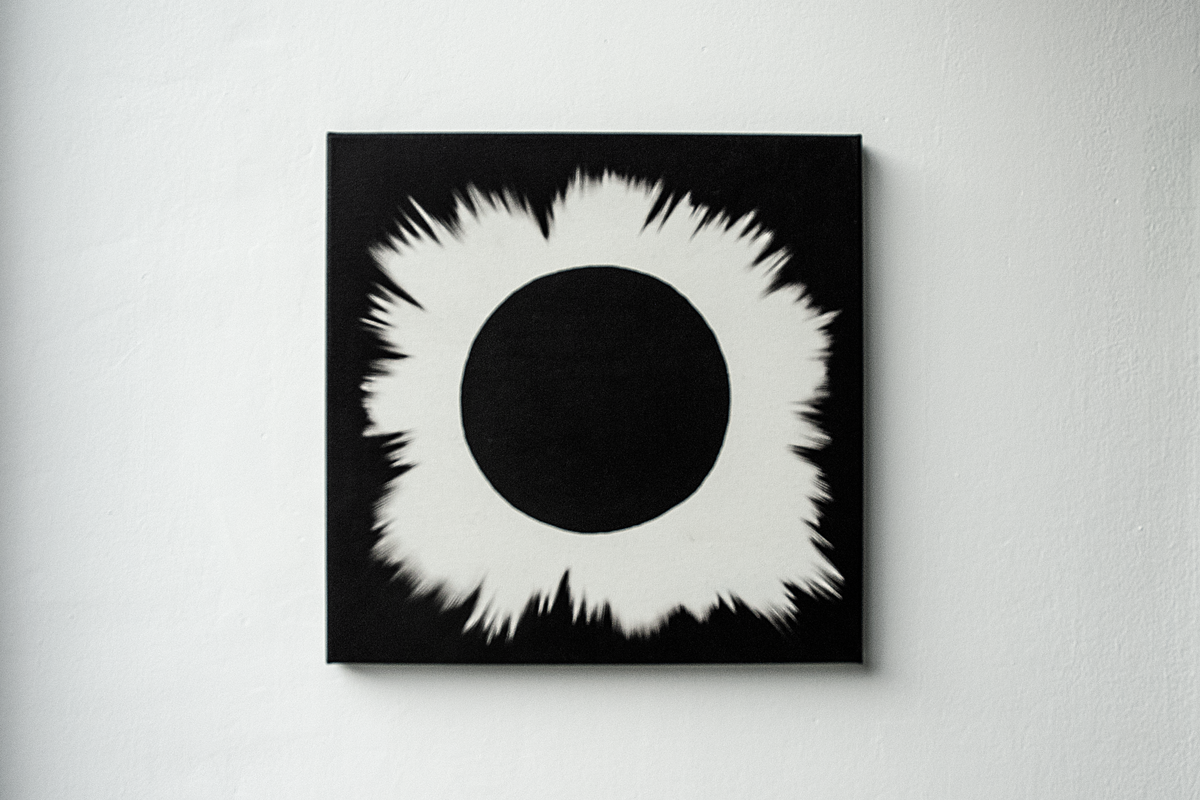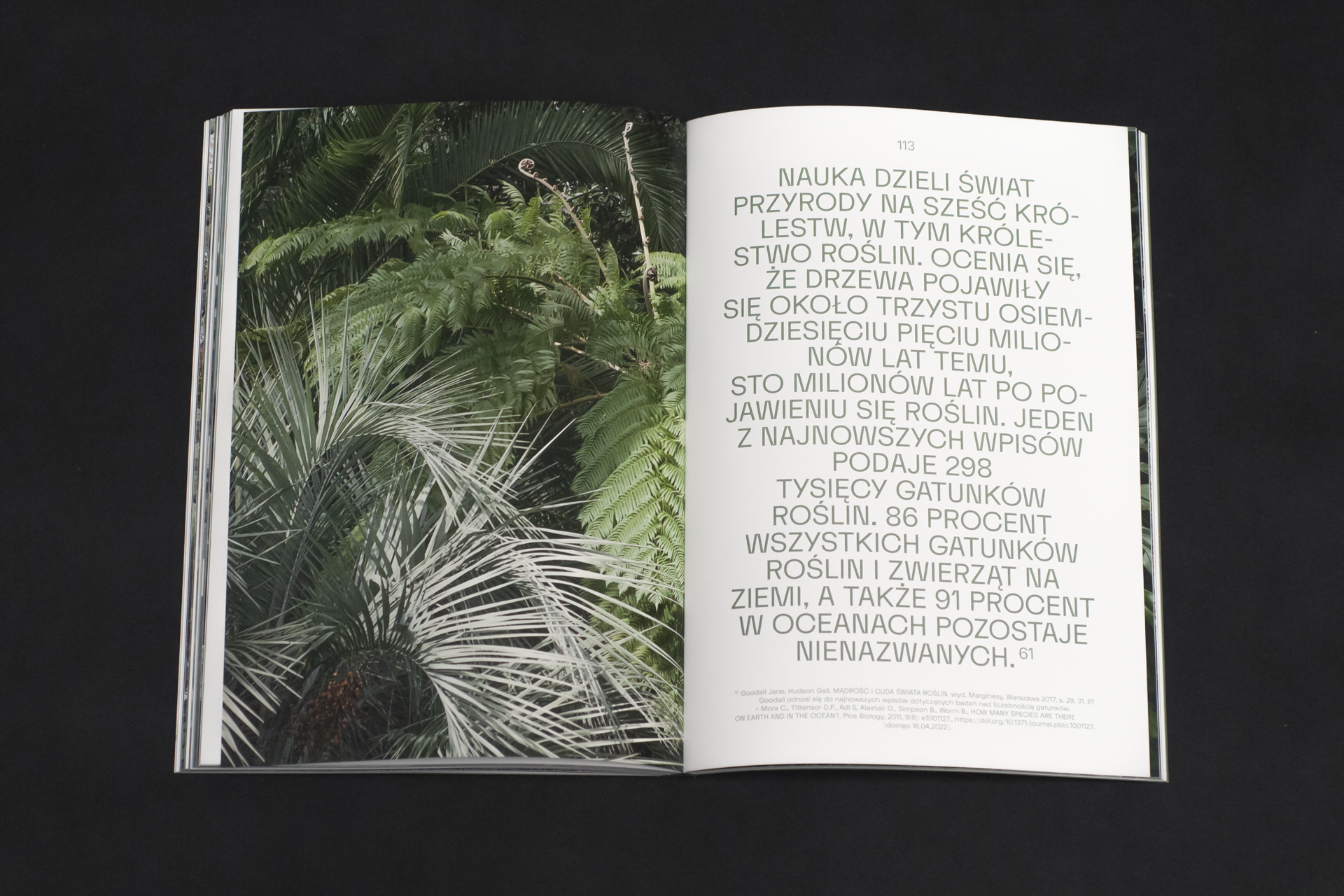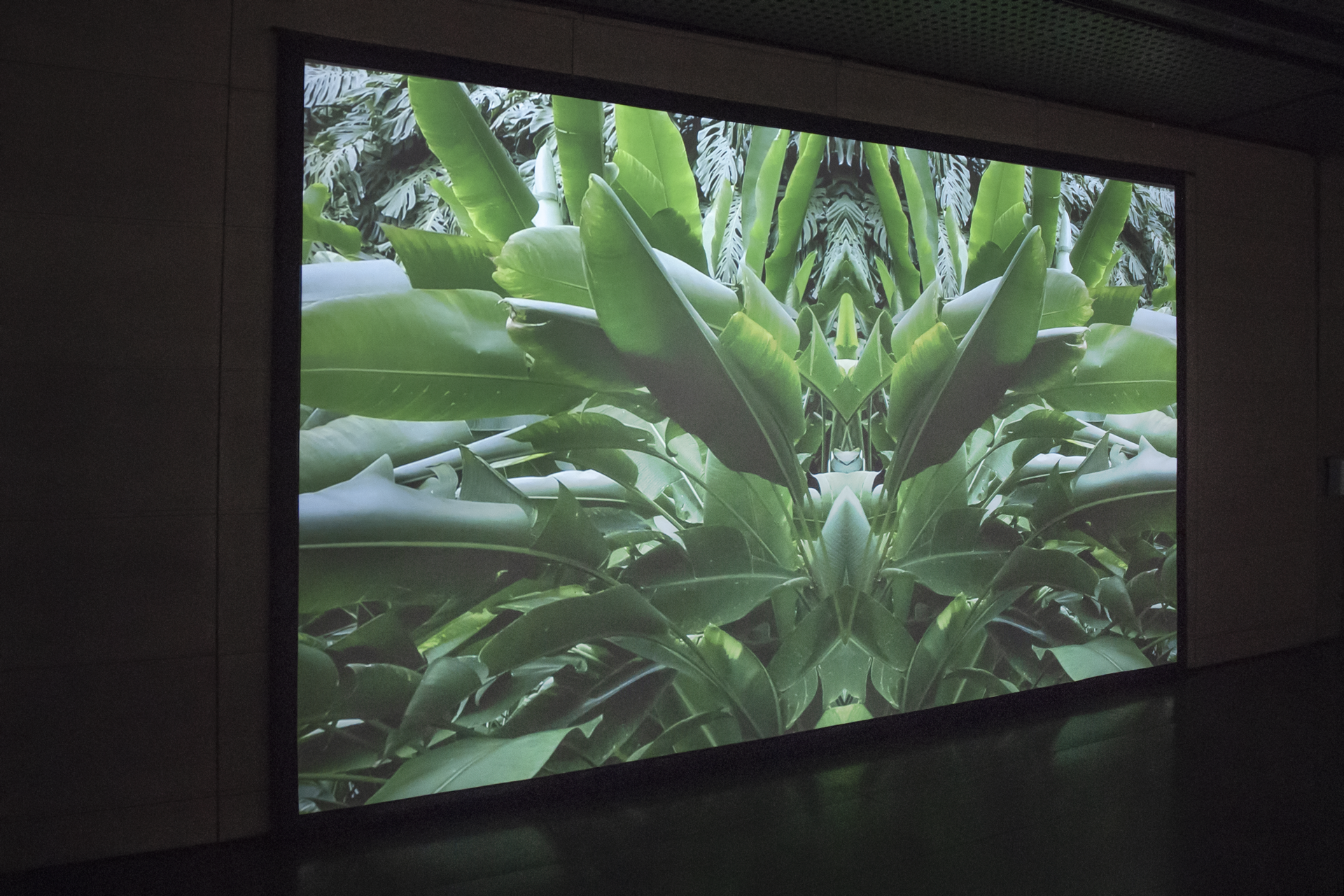Abstrakttropik — zasłona / curtain / 2022 / fotografia, druk na tkaninie / photography, print on textile, 2,5 / 3,2 m (w dwóch elementach / in two elements) — wymiary / dimensions in-situ








ABSTRAKTTROPIK — zasłona, to fotografia jednych z najstarszych gatunków roślin świata; między innymi Dicksonii antarctiki, Phoenix canariensis (palmy daktylowej), wydrukowana na tkaninie zasłonowej. Wielkoformatowa fotografia predstawia rośliny w skali zbliżonej do wymiarów rzeczywistych. Fotografia pochodzi z Monte Palace Tropical Garden na Maderze.
ABSTRAKTTROPIK — zasłona, jest jednym z elementów projektu artystyczno-badawczego ABSTRAKTTROPIK, HELIOTERAPIA W KONTEKŚCIE EKSPERYMENTU BIOSPHERE 2. który powstał w ramach środowiskowych studiów doktoranckich na wydziale Intermediów, na Akademii Sztuk Pięknych w Krakowie (2018/2022). Promotorem projektu był dr hab. Artur Grabowski. Projekt ABSTRAKTTROPIK podsumowywała wystawa w Muzeum Sztuki i Techniki Japońskiej MANGGHA w Krakowie / 28.09.2022 — 09.10.2022. www.manggha.pl
Instalacja ABSTRAKTTROPIK składa się z elementów: 1 / CZTERY FOTOGRAFIE, 100 / 100 cm 2 / FOTOGRAFIA — zasłona / druk na tkaninie, 2,5 / 3,2 m 3 / INSTALACJA — przetworzone lampy dla roślin w formie projektorów, 122 / 10 / 7 cm 4 / WIDEO — wideo / 24 min., dzwięk: Studio S21: Jacek Harędziński, Michał Gorczyca.
Projektowi ABSTRAKTTROPIK towarzyszy publikacja.
ABSTRAKTTROPIK to instalacja in-situ, stworzona z wykorzystaniem światła sztucznego dla roślin. Przestrzeń izolowanego habitatu inspirowana jest ideą towarzyszącą powstaniu naukowego centrum badawczego środowiska naturalnego — BIOSFERY 2. Eksperymentalna szklarnia powstała w celu prowadzenia badań nad możliwością odtworzenia biosfery Ziemi. W sztucznie stworzonym zamkniętym systemie ekologicznym eksperymentowano nad możliwością przetrwania ludzi i roślin z różnych stref klimatycznych, w czasie niesprzyjających warunków zewnętrznych.
Wszystkie procesy fizyczne, chemiczne i biologiczne zachodzące na Ziemi i w atmosferze zależne są od energii Słońca. Jego promieniowanie jest najważniejszym czynnikiem środowiskowym dla życia. Od procesu fotosyntezy zależne jest prawie całe życie na ziemi. Ludzkość zależna jest od roślin, które stanowi dla nas główne żródło pożywienia. Pośrednio zależni jesteśmy od zwierząt, które również w łańcuchu pokarmowym żywią się roślinami. W klimacie Europy środkowej, w klimacie kontynentalnym, pory roku warunkują okres wegetacji. To zaledwie kilka miesięcy. W klimacie tropikalnym, subtropikalnym, śródziemnomorskim wegetacja przebiega całorocznie. Roślinność jest więc w ciągłym procesie wzrostu, owocowania, namnażania się. Rośliny, ich kwiaty, owoce i liście rosną do ogromnych rozmiarów, wydają się wręcz przeskalowane.
Symbolika roślin pojawiająca się często w realizacjach Karoliny Kowalskiej powiązana jest z kolorem zielonym; to wzrost, rozwój i proces. Rośliny traktowane są jako sensory czy transformatory światła i energii, reprezentują biosferę nieskończonych możliwości powstawania nowych form życia. W instalacji ABSTRAKTTROPIK pojawia się propozycja kosmologiczna pełna paradoksów i sprzeczności. To fantazja o równoległym idealnie powtarzalnym świecie. Jest to intelektualna konspiracja i alternatywny porządek świata, możliwy wyłącznie na polu sztuki.
ABSTRACTTROPIK — a curtain, is a photograph of one of the oldest species of plants in the world; among others, Dicksonia antarctika, Phoenix canariensis (date palm), printed on the curtain fabric. Large-format photography presents plants in a scale similar to real dimensions. The photo was taken in the Monte Palace Tropical Garden in Madeira.
ABSTRAKTTROPIK — a curtain, is one of the elements of the artistic and research project ABSTRAKTTROPIK, HELIOTHERAPY IN THE CONTEXT OF THE BIOSPHERE 2 EXPERIMENT, which was created as part of environmental doctoral studies at the Faculty of Intermedia, at the Academy of Fine Arts in Krakow (2018/2022). The promoter of the project was dr hab. Artur Grabowski. The ABSTRAKTTROPIK project was summed up by an exhibition at the MANGGHA Museum of Japanese Art and Technology in Kraków / September 28.2022 — October 9.2022. www.manggha.pl
The ABSTRAKTTROPIK installation consists of the following elements: 1 / FOUR PHOTOGRAPHS, 100 / 100 cm 2 / PHOTO — curtain / print on fabric, 2.5 / 3.2 m 3 / INSTALLATION — processed lamps for plants in the form of projectors, 122 / 10 / 7 cm 4 / VIDEO — video / 24 min., sound: Studio S21: Jacek Harędziński, Michał Gorczyca.
The ABSTRAKTTROPIK project is accompanied by a publication.
ABSTRAKTTROPIK is an in-situ installation created using artificial light for plants. The space of the isolated habitat is inspired by the idea accompanying the creation of a scientific research center for the natural environment— BIOSPHERE 2. The experimental greenhouse was created to conduct research on the possibility of recreating the Earth's biosphere. In an artificially created closed ecological system, experiments were carried out on the possibility of survival of people and plants from different climatic zones during unfavorable external conditions.
All physical, chemical and biological processes taking place on the Earth and in the atmosphere depend on the energy of the Sun. Its radiation is the most important environmental factor for life. Almost all life on earth depends on photosynthesis. Humanity depends on plants, which are our main source of food. We are indirectly dependent on animals that also feed on plants in the food chain. In the climate of Central Europe, in the continental climate, the seasons determine the growing season. It's only a few months. In tropical, subtropical and Mediterranean climates, vegetation occurs all year round. Vegetation is therefore in a continuous process of growth, fruiting and multiplication. Plants, their flowers, fruits and leaves grow to enormous sizes, they seem to be scaled up.
The symbolism of plants that often appears in the works of Karolina Kowalska is associated with the color green; it is growth, development and process. Plants are treated as sensors or transformers of light and energy, they represent a biosphere of infinite possibilities for the emergence of new life forms. In the ABSTRAKTTROPIK installation, a cosmological proposal full of paradoxes and contradictions appears. It's a fantasy about a parallel, perfectly repeatable world. It is an intellectual conspiracy and an alternative world order, possible only in the field of art.





































